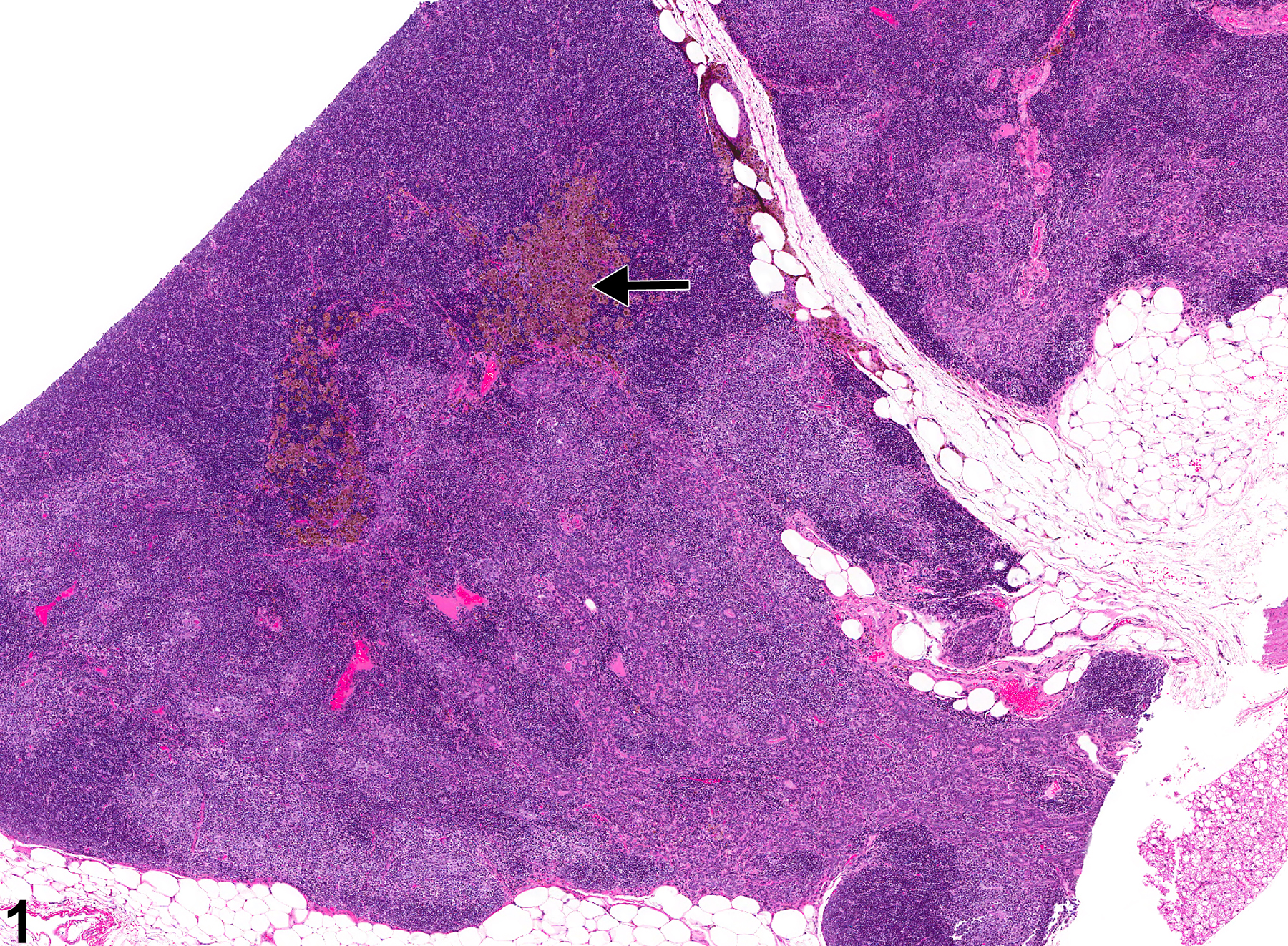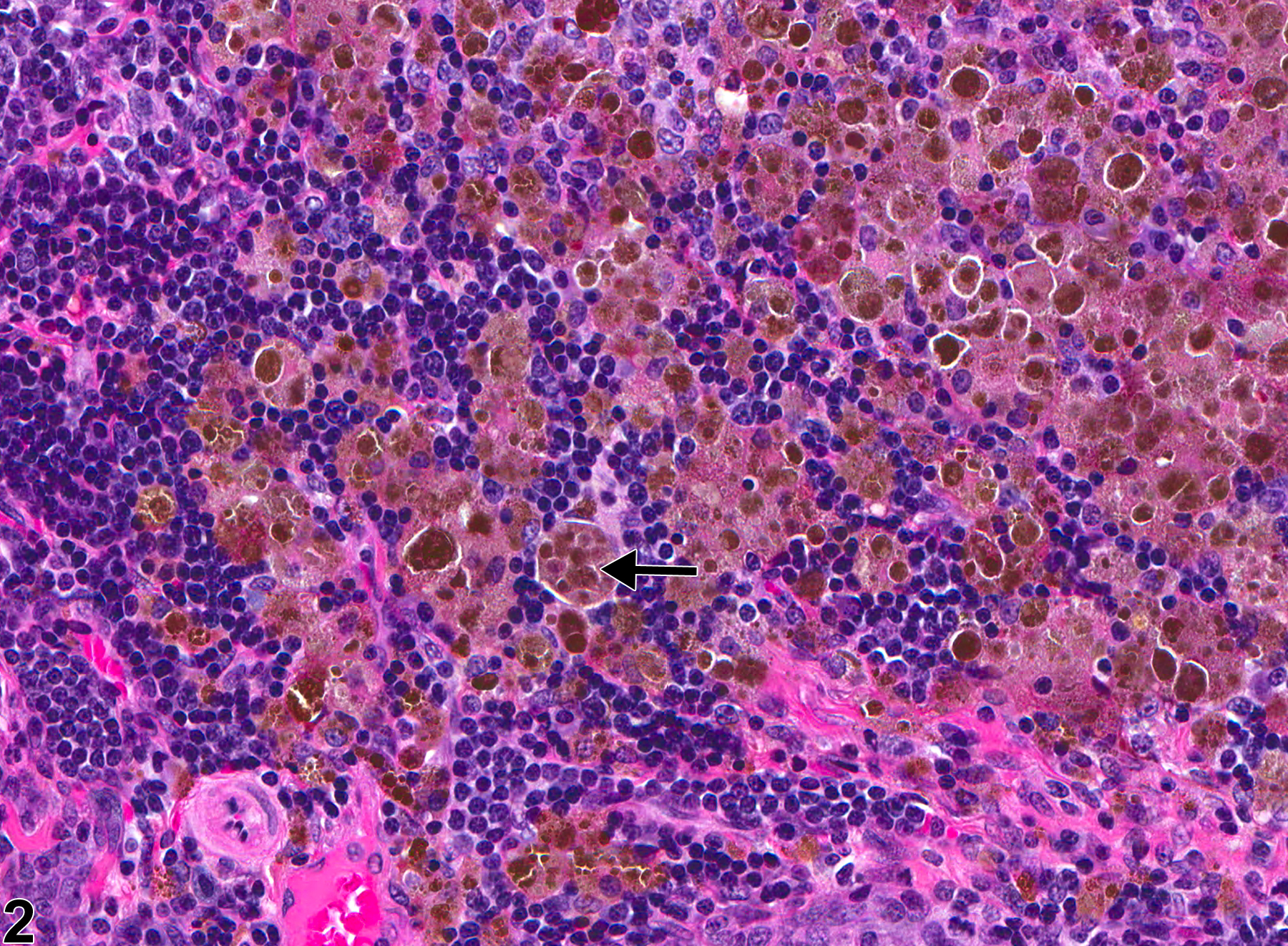Immune System
Thymus - Pigment
Narrative
Elmore SA. 2006. Enhanced histopathology of the thymus. Toxicol Pathol 34:656-665.
Full Text: https://www.ncbi.nlm.nih.gov/pmc/articles/PMC1800589/National Toxicology Program. 2008. NTP TR-541. Toxicology and Carcinogenesis Studies of Formamide (CAS No. 75-12-7) in F344/N Rats and B6C3F1 Mice (Gavage Studies). NTP, Research Triangle Park, NC.
Abstract: https://ntp.niehs.nih.gov/go/29290
Thymus - Pigment in a female F344/N rat from a chronic study. Brown pigment (likely hemosiderin) (arrow) is present at the thymus corticomedullary junction.



